Discover 7 hidden attractions, cool sights, and unusual things to do in Desert National Wildlife Refuge (United States). Don't miss out on these must-see attractions: Gass Peak, Las Vegas Valley, and Three Lakes Valley. Also, be sure to include Papoose Lake in your itinerary.
Below, you can find the list of the most amazing places you should visit in Desert National Wildlife Refuge (Nevada).
Table of Contents
Gass Peak

Peak in Nevada. Gass Peak is the highest peak in the Las Vegas Range of Southern Nevada with a summit of 6,937 feet. It is easily seen to the north of the Las Vegas Valley, bordering the city of North Las Vegas. The peak is located about 20 miles north of Las Vegas and is within the Desert National Wildlife Refuge, administered by the U.S. Fish & Wildlife Service.
A communications tower with solar panels has been built at the top of the peak.[1]
Las Vegas Valley
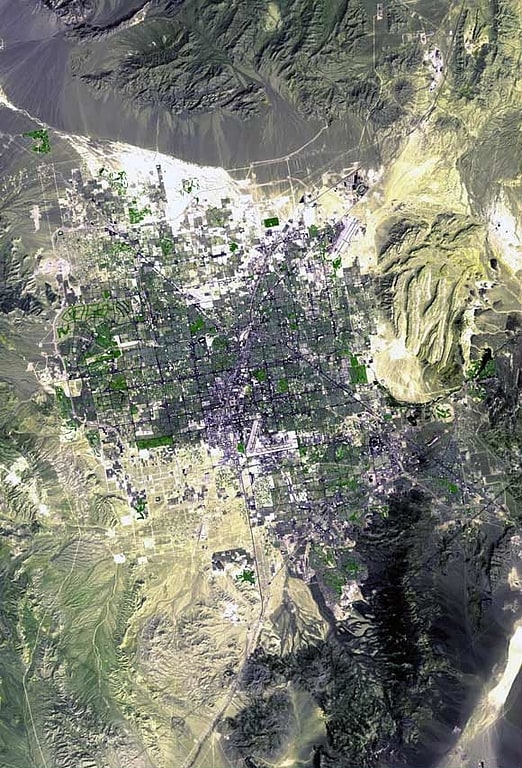
City in Nevada. The Las Vegas Valley is a major metropolitan area in the southern part of the U.S. state of Nevada, and the second largest in the Southwestern United States. The state's largest urban agglomeration, the Las Vegas Metropolitan Statistical Area is coextensive since 2003 with Clark County, Nevada. The Valley is largely defined by the Las Vegas Valley landform, a 600 sq mi basin area surrounded by mountains to the north, south, east and west of the metropolitan area. The Valley is home to the three largest incorporated cities in Nevada: Las Vegas, Henderson and North Las Vegas. Eleven unincorporated towns governed by the Clark County government are part of the Las Vegas Township and constitute the largest community in the state of Nevada.
The names Las Vegas and Vegas are interchangeably used to indicate the Valley, the Strip, and the city, and as a brand by the Las Vegas Convention and Visitors Authority to denominate the region. The Valley is affectionately known as the "ninth island" by Hawaii natives and Las Vegans alike, in part due to the large number of people originally from Hawaii who live in and regularly travel to Las Vegas.
Since the 1990s the Las Vegas Valley has seen rapid growth, tripling its population of 741,459 in 1990 to 2,227,053 estimated in 2018. The Las Vegas Valley remains one of the fastest growing metropolitan areas in the United States, and in its relatively short history has established a diverse presence in international business, commerce, urban development and entertainment, as well as one of the most visited tourist destinations in the world. In 2014, a record-breaking 41 million visited the Las Vegas area, producing a gross metropolitan product of more than $100 billion.[2]
Three Lakes Valley
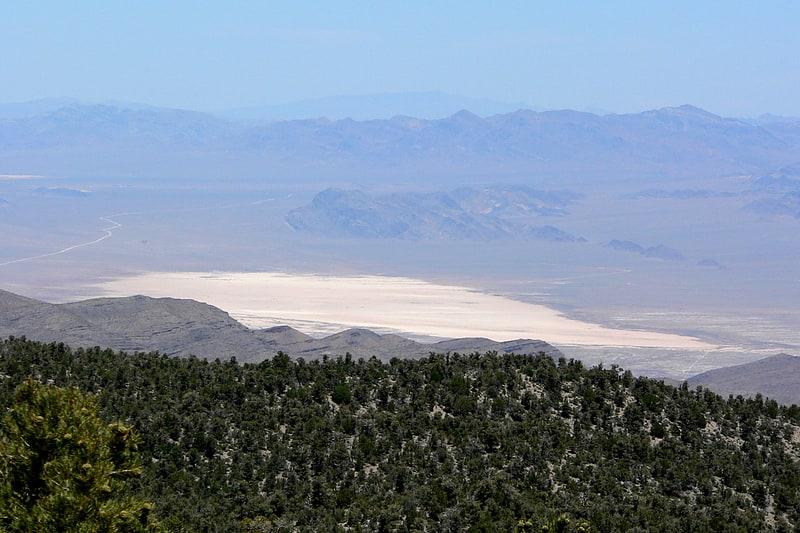
Three Lakes Valley is a 25-mile long, partially endorheic valley in southwest Lincoln County and northwest Clark County, Nevada. The southwest of the valley has a narrowing with washes that flow south into the watershed of the Las Vegas Valley, a tributary to Lake Mead–Colorado River watersheds.[3]
Papoose Lake
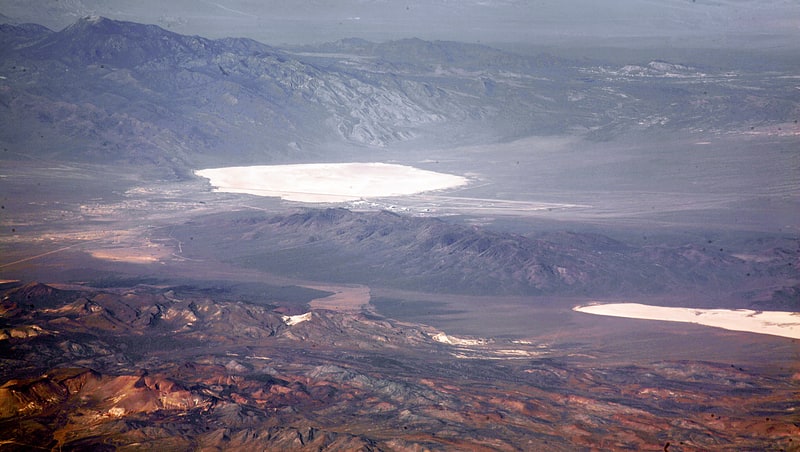
Lake in Nevada. Papoose Lake is a dry lake bed located in Lincoln County, Nevada, U.S. The lake lies within the plot of land referred to as the Groom Lake facility and is a restricted area. The lake is located a few miles southwest of the Groom Lake facility adjacent to the Papoose Range.[4]
Las Vegas Range
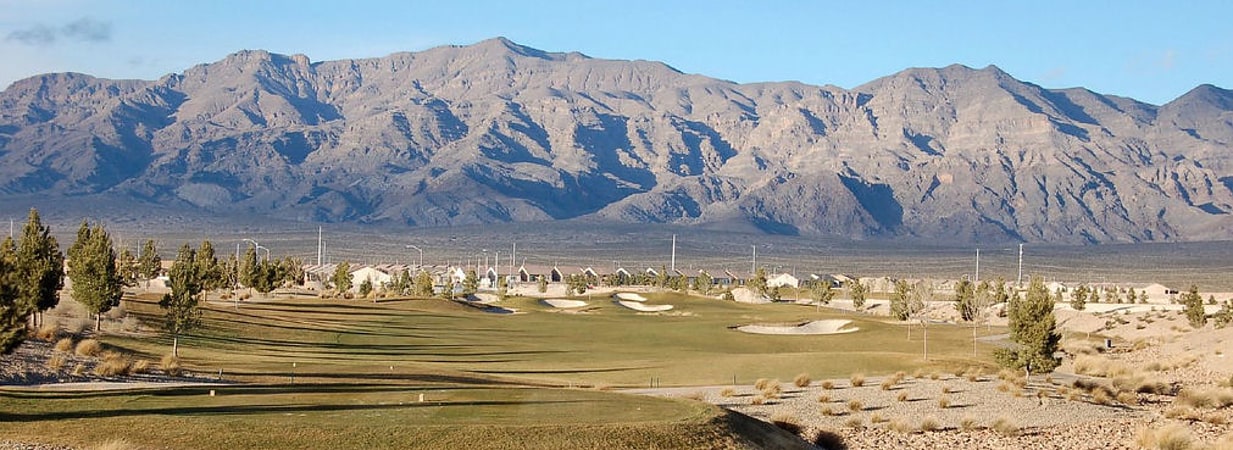
Mountain range in Nevada. The Las Vegas Range is an arid mountain range in Clark County, Nevada. The range is located in the southeast of the Desert National Wildlife Refuge.[5]
Sheep Range
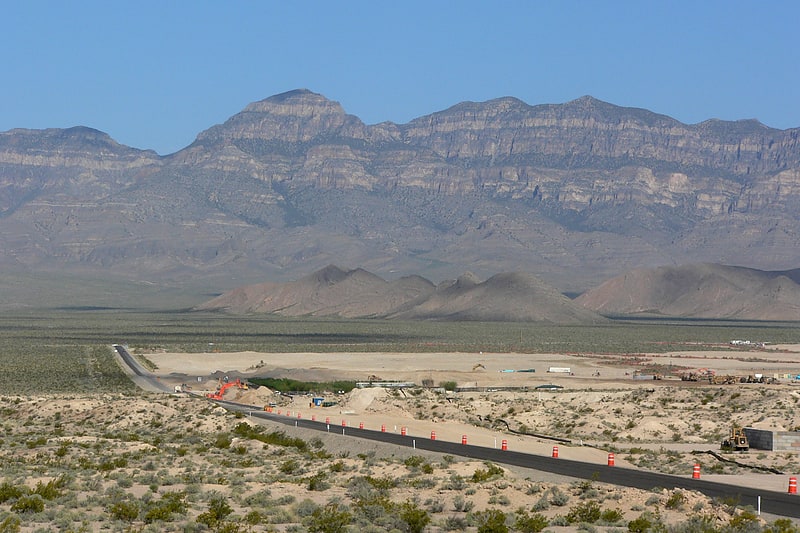
Mountain range in Nevada. The Sheep Range is located north of Las Vegas, Nevada in the United States. It is found in both Clark and Lincoln Counties in the Desert National Wildlife Refuge. The mountains reach a peak at Hayford Peak, 9,912 feet above sea level between the Las Vegas Range to the east and the Desert Range to the west. The Sheep Range lies in a generally north-south direction.
The Great Basin Divide starts an east-west transect at the northeast of the Spring Mountains, with the east-west transect border south being all of the Las Vegas Valley, and a midsection, north perimeter of the watershed for the Las Vegas Wash. The Great Basin Divide transect goes through the south region of the Sheep Range, and the transect ends eastwards at the Utah border, the Clover and Bull Valley Mountains.
The range was named for mountain sheep which roamed there.[6]
Hidden Forest Cabin
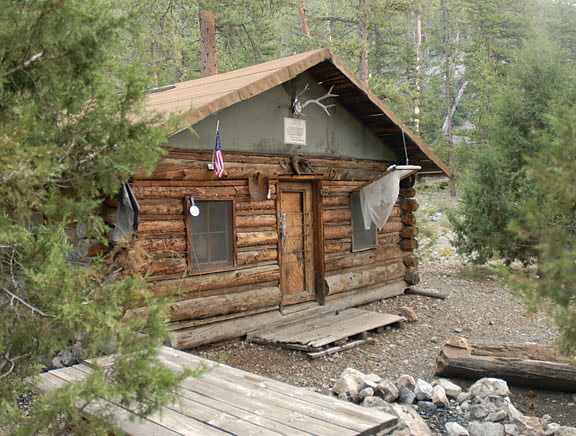
The Hidden Forest Cabin is an old game warden's dwelling in Clark County, Nevada, United States in the Desert National Wildlife Refuge. It is located on Hidden Forest Road, in the Hidden Forest in the Sheep Range along the route to Hayford Peak.[7]